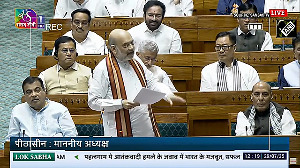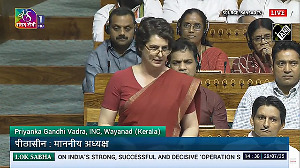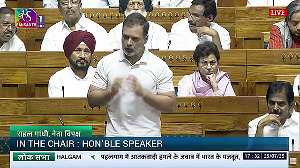Reserve Bank of India (RBI) Governor Sanjay Malhotra said the repo rate cut in the February meeting of the monetary policy committee (MPC) was due to inflation aligning with the target and recognising the fact that monetary policy is forward-looking.

The RBI has projected consumer price index (CPI) inflation at 4.2 per cent for the fourth quarter as well for the financial year 2025-26.
Malhotra also said food inflation pressures were likely to ease significantly due to robust kharif harvest arrivals, the winter season correction in vegetable prices, and a promising rabi crop outlook.
“The food inflation outlook is turning decisively positive,” Malhotra said.
“These would provide greater impetus to disinflation of headline CPI and its eventual alignment with the target rate in FY 2025-26,” he said.
The February meeting of the MPC, which was the first chaired by Malhotra, reduced the policy repo rate — after five years — by 25 basis points (bps) to 6.25 per cent.
While commenting on policy easing, Malhotra said farm sector growth and growth-supportive measures in the Union Budget would boost aggregate demand.
However, he cautioned about rising uncertainties in global financial markets and trade policies. He also said the continuing risk of adverse weather events poses challenges to inflation and growth.
“We need to be watchful of how these forces play out,” he said.
Deputy Governor M Rajeshwar Rao also cautioned that the current environment is replete with uncertainties, which call for watchfulness, alertness, and a nimble response.
However, he agreed that the inflation outlook is becoming more benign.
He said the slew of liquidity measures, including the reduction in banks’ cash reserve ratio (CRR), created conducive conditions for the monetary transmission of the rate cut.
“This monetary policy measure, in conjunction with the fiscal measures announced in the Budget, should stimulate aggregate demand conditions.
"Furthermore, the government has reaffirmed its commitment to fiscal consolidation, which should help to anchor medium-term inflation expectations,” he said.
Another internal member, Rajiv Ranjan, highlighted a subtle change in the October monetary policy statement that indicated the opening up of space for a rate cut.
“In fact, we also made a very subtle change in October 2024 in the wording of our stance in the MPC resolution, from ‘…a durable alignment of inflation to the target’ to ‘…a durable alignment of inflation with the target’ — implying more flexibility in our approach,” Ranjan said, adding: “Perhaps, this went unnoticed.”
Ranjan said that, in line with the MPC’s sequencing path, a policy rate cut in February was the most rational and appropriate next step, as confidence in the disinflation path had grown.
“In line with this prognosis, we also prepared the market by infusing sufficient liquidity for better transmission,” he said.
According to external member Ram Singh, low core inflation strengthens the case for a rate cut, especially given expectations of further moderation in food price inflation.
“To the extent that inflation risk arises from food prices, it is expected to have a limited impact on core inflation,” he said.
Commenting on the slowdown in economic growth, Singh said: “Subdued private consumption due to a low growth rate of real wages is a factor behind the slowdown.”
He pointed out that an excessively contractionary monetary policy had aggravated the problem, as high interest rates and regulatory tightening had slowed credit growth.
The growth rate for bank credit declined from 15.6 per cent (year-on-year) in December 2023 to 12.4 per cent in December 2024.
“This puts downward pressure on demand growth across several segments of the economy,” Singh added.
He also said there was low probability that a rate cut will put pressure on the exchange rate.
Another internal member, Saugata Bhattacharya, said both growth and inflation had moved favourably since the MPC meeting in December.
“All things considered, I am now cautiously optimistic about the downward trajectory of inflation.
"I believe that, at this point, the required policy response to the inflation-growth trade-off — even factoring in significant margins of error from emerging risks — seems skewed in favour of the latter,” he said.
Given the forecasted inflation trajectory, Bhattacharya said, the policy repo rate might soon become excessively restrictive, increasing the risk of cumulatively damaging growth impulses.
External member Nagesh Kumar, who had been advocating for a rate cut since the October meeting, reiterated his concerns about the economy’s slowdown.
“The slowdown of the manufacturing sector is a matter of concern, given its role in the creation of decent jobs for our youthful population…the case for supporting growth cannot be over-emphasised,” he said.
Kumar said that with the Union Budget sustaining capital expenditure and offering income tax concessions to boost consumption, it was now monetary policy’s turn to support economic growth through a rate cut.
He said the MPC could be more ambitious and target a 50 bps cut, which could signal India’s commitment to reviving economic growth momentum.
“However, given global uncertainties, for the present policy, I vote for a 25 bp cut in the repo rate while keeping a neutral stance,” Kumar said.











